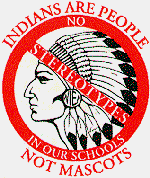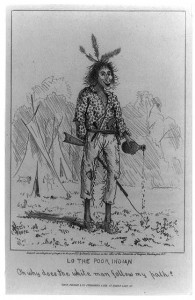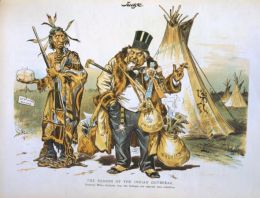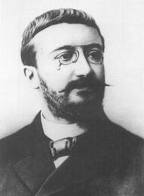Native Americans generally ate a healthy, varied diet when they were free to do so. Foods included wild berries, fishes of all kinds, pigeons and ducks, bread made from nutritious wild grasses like pigweed and dropseed, and sweeteners from agave and maple syrup. Native Americans drank sassafras tea and broth thickened with corn silks, along with many other soups and drinks. Many explorers were impressed by the physical development of Native Americans and saw much to admire in their athleticism and endurance. Continue reading
Tag Archives: Native Americans
Labeled Inferior
Labels such as Native Americans, American Indians, First Peoples, and other names for the indigenous people of the American continent, are an attempt to repudiate the negative terms frequently used in the past.
During the period when the Canton Asylum for Insane Indians existed, labels in use to describe Native Americans included: injun, savage, redskin, wild indian, and squaw or buck, among others. Names indicate status, and these insensitive terms denoted the status in which Native Americans were held while they were being assimilated into U.S. culture. Denigrating terms reinforced the idea that native cultures were “bad” or inferior to the white one. Even when whites tried to use a more flattering term like “noble savage,” they were at least unconsciously callous.
The controversy around the labels Native American and American Indian as a referencing term has become less heated. Polls show that either term tends to be acceptable. A preferred method of reference is by tribe: “This is Joe, a Seminole Indian,” for example.
________________________________________________________
Are You Smarter Than An Indian?
In 1905 Alfred Binet (1857-1911) commonly known as the “father” of IQ testing, developed techniques to assess intelligence in primary grade children who were not successful in normal classrooms.
Binet chose a series of 30 short tasks with simple instructions, that related to everyday problems of life. Examples of these tasks are:
- name parts of the body
- compare lengths and weights
- count coins
- assess which of several faces is “prettier”
- name objects in a picture
- define words
Binet then compared the tested child’s results against a norm of “average” children and assigned a mental age to the subject.
He recognized that a test could be intimidating. Binet recommended that: “The examination should take place in a quiet room… […]It is important that when a child sees the experimenter for the first time, he should be reassured by the presence of someone he knows, a relative, an attendant, or a school superintendent. […]If he refuses to reply to a test, pass to the next one, or perhaps offer him a piece of candy; if his silence continues, send him away until another time.”
Imagine the circumstances under which most mental tests would have been administered to Native Americans–who didn’t understand English, or had a different cultural notion of “pretty,” or perhaps had never counted coins. Confused, perhaps intimidated or frightened, many would have been found “defective” by their examiners.
_________________________________________________________




